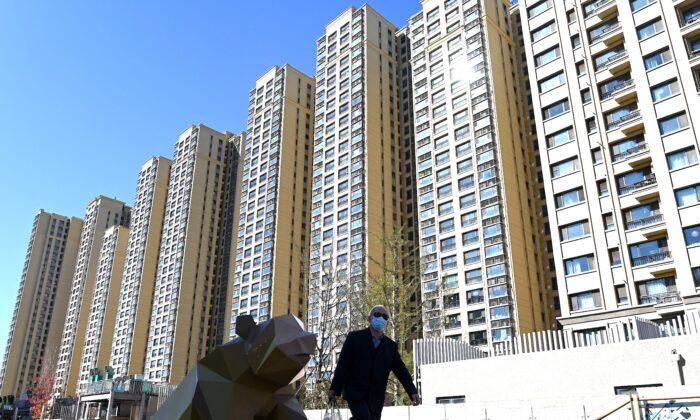Activities in China’s manufacturing and services sectors contracted quickly in March as local governments locked down major factory and trade hubs to curb the worst resurgence of COVID-19 cases since early 2020.
The Caixin/Markit survey showed on April 1 that China’s manufacturing Purchasing Managers’ Index (PMI) shrank to 48.1 in March, indicating the steepest rate of contraction since February 2020, when the spread of COVID was first detected in the Chinese city of Wuhan. The deterioration in manufacturing conditions was broadly in line with the official PMI released on March 31.
The official manufacturing PMI, which primarily focuses on state-owned firms, fell to 49.5 from 50.2 in February, according to China’s National Bureau of Statistics (NBS), while the non-manufacturing PMI eased to 48.4 from 51.6 in the previous month.
A reading below 50-point indicates a contraction from the previous month.
China’s lockdowns have impacted industries in key manufacturing districts like Shenzhen in the south and Changchun in the northeast, putting the country’s economy at risk of a dramatic slowdown.
Activity in the services sector tumbled as well since pandemic controls in cities kept people away from restaurants, shopping centers, and hotels.
“Clusters of pandemic breakouts have recently occurred in various parts of China, and this, combined with a major increase in global geopolitical uncertainty, has affected Chinese firms’ production and operations,” said Zhao Qinghe, a senior statistician at NBS.
Economists predicted that the situation would worsen in April, stifling GDP in the second quarter as the rapidly deteriorating pandemic and escalating control measures added to China’s economic woes.
“The PMIs probably understated the hit to activity last month,” said Julian Evans-Pritchard, senior China economist at Capital Economics.
“The services index remained above the low of 45.2 that it hit last August during the Delta wave. That’s probably because the survey was conducted prior to the worst disruptions.”
The sub-index of March for production declined below the 50-point mark. The gauge for new orders was also in negative territory, reflecting weaker domestic and international demand.
Due to the latest COVID outbreaks in China, the decline in new export orders in March accelerated, disrupting the shipping sector and increasing market uncertainty, according to the companies surveyed.
The People’s Bank of China’s most recent quarterly survey (pdf) also raises red flags. According to the survey, business confidence among Chinese industrial firms deteriorated in the first quarter, with orders and profitability indicators decreasing at the quickest rate in two years.
The newest resurgence of COVID has resulted in lockdowns of finance and commerce center Shanghai and shutdowns of technology and manufacturing hub Shenzhen. Companies like Apple Inc. supplier Foxconn in Shenzhen were forced to close temporarily.
Changchun, which produces roughly 10 percent of China’s annual automobiles, has conducted a dozen rounds of citywide testing of its residents and reduced manufacturing activities.
The disruptions impacted the “stability” of the manufacturing supply chain, NBS’s Zhao said, noting that an index measuring supplier delivery time fell to 46.5, the lowest since March 2020. Some of the firms mentioned clogged logistics and extended delivery cycles, he added.
China’s official composite PMI, which combined manufacturing and services, stood at 48.8 in March, the second-lowest reading on record since February 2020.
“This suggests that the economy is contracting at its fastest pace since the height of the initial COVID-19 outbreak in February 2020,” Evans-Pritchard said.
Reuters contributed to this report.




